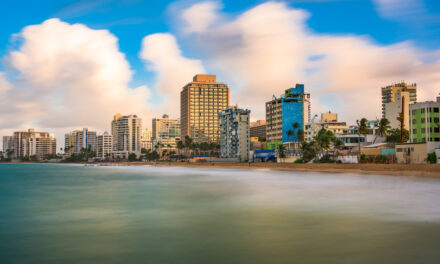Navigating Puerto Rico’s Economic Challenges: A Path to Restoration
Introduction: Puerto Rico, with its rich cultural heritage and stunning landscapes, has long been a jewel of the Caribbean. However, beneath its vibrant exterior lies a complex web of economic challenges that have plagued the island for decades. From declining tax revenues to mounting debt burdens, Puerto Rico faces a daunting journey towards economic stability and prosperity. In this blog, we’ll explore the economic landscape of Puerto Rico, its fiscal challenges, and the potential pathways to restoration.
Overview of Retail Sales and Tax Revenue: As of the latest available data, the Puerto Rico Department of Treasury reported retail sales figures for the fiscal year 2020-2021, totaling approximately $55.1 billion. With the current Sales and Use Tax (SUT) rate standing at 11.5%, the estimated tax revenue generated for the government amounted to $6.34 billion. This significant revenue stream underscores the critical role of retail sales in fueling Puerto Rico’s economy and funding essential government services.
Fiscal Challenges and Debt Restructuring: Despite substantial tax revenue from retail sales, Puerto Rico grapples with deep-rooted fiscal challenges and staggering debt burdens. Over the past few decades, declining tax revenues and mounting debt in various sectors, including healthcare and social services, have forced Puerto Rico to resort to borrowing money to sustain essential programs. In March 2022, Puerto Rico finalized its largest debt restructuring, issuing $7.4 billion in new bonds to replace $34.3 billion in outstanding bonds—a 78 percent reduction aimed at alleviating the island’s debt burden and restoring fiscal stability.
Budget Allocation and Economic Priorities: Balancing Puerto Rico’s budget requires careful allocation of resources to address pressing economic priorities while ensuring essential public services remain operational. Based on past budget trends and economic analyses, a hypothetical budget allocation could be structured as follows:
| Expense Category | Percentage | Amount (in billions) |
|---|---|---|
| Payroll and Personnel Costs | 40% | $2.536 |
| Infrastructure and Transportation | 15% | $0.951 |
| Healthcare and Social Services | 20% | $1.268 |
| Education | 25% | $1.585 |
| Public Safety and Security | 10% | $0.634 |
| Debt Servicing | 20% | $1.268 |
| Other Expenses | 15% | $0.951 |
| Total | 100% | $8.183 billion |
These budget allocations reflect the need to prioritize critical sectors such as healthcare, education, and infrastructure while addressing the island’s debt servicing obligations. However, adjustments may be necessary to accommodate evolving economic conditions and emerging priorities.
The justification for the proposed budget allocation in the table provided is based on several factors, including historical spending patterns, essential service requirements, and long-term economic sustainability goals. While the estimated tax revenue from retail sales for the fiscal year 2020-2021 amounted to approximately $6.34 billion, it’s essential to recognize that budget allocation decisions must consider both current revenue streams and future economic prospects. Here’s a breakdown of the justification for each expense category:
- Payroll and Personnel Costs (40%):
- Justification: Personnel costs encompass salaries, wages, and benefits for government employees, including essential frontline workers in healthcare, education, and public safety. Maintaining a skilled and motivated workforce is crucial for delivering quality public services and driving economic development.
- Infrastructure and Transportation (15%):
- Justification: Investment in infrastructure, such as roads, bridges, and utilities, is vital for enhancing connectivity, promoting commerce, and fostering long-term economic growth. Improving transportation networks and modernizing infrastructure can attract private investment, create jobs, and stimulate economic activity.
- Healthcare and Social Services (20%):
- Justification: Healthcare and social services play a pivotal role in safeguarding public health, addressing social inequalities, and supporting vulnerable populations. Allocating resources to healthcare infrastructure, disease prevention, and social welfare programs is essential for enhancing overall well-being and reducing long-term healthcare costs.
- Education (25%):
- Justification: Investing in education is an investment in human capital and economic prosperity. Funding for education initiatives, including schools, vocational training programs, and higher education institutions, is critical for equipping future generations with the skills and knowledge needed to succeed in the workforce and drive innovation.
- Public Safety and Security (10%):
- Justification: Ensuring public safety and security is paramount for fostering a stable and conducive environment for economic activity and social cohesion. Allocating resources to law enforcement, emergency response services, and crime prevention initiatives helps mitigate risks, enhance resilience, and promote community well-being.
- Debt Servicing (20%):
- Justification: Servicing existing debt obligations is a necessary component of fiscal responsibility and financial stability. While debt servicing consumes a significant portion of the budget, restructuring debt and implementing prudent fiscal management practices can alleviate long-term financial burdens and restore investor confidence.
- Other Expenses (15%):
- Justification: The “Other Expenses” category encompasses various discretionary spending priorities, including economic development initiatives, cultural preservation efforts, and administrative costs. Flexibility in budget allocation allows for targeted investments in areas of strategic importance and emerging needs.
While the proposed budget allocation may exceed the estimated tax revenue from retail sales, it sets forth a framework for prioritizing critical services, addressing structural deficiencies, and fostering sustainable economic development. Adjustments may be necessary based on revenue fluctuations, economic conditions, and policy priorities to ensure fiscal prudence and optimal resource utilization.
Conclusion: Puerto Rico’s journey towards economic restoration is fraught with challenges, but it’s not insurmountable. By leveraging its strengths, addressing fiscal vulnerabilities, and fostering strategic partnerships, Puerto Rico can chart a path towards sustainable growth and prosperity. As stakeholders, it’s imperative to advocate for prudent fiscal policies, equitable resource allocation, and inclusive economic opportunities to ensure a brighter future for Puerto Rico and its residents.
Let’s join hands in supporting Puerto Rico’s economic revitalization and fostering a resilient, thriving island community.
#PuertoRicoEconomy #FiscalChallenges #BudgetAllocation #EconomicRestoration #SupportPuertoRico



